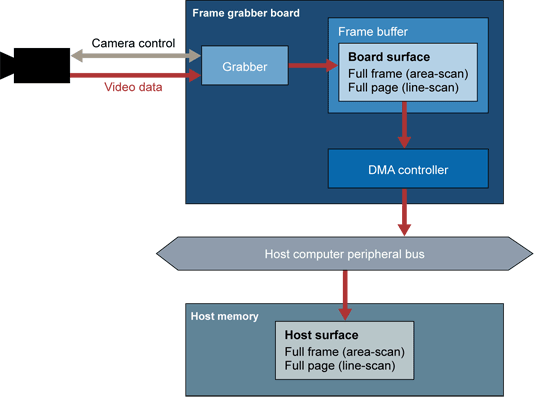Frame Buffer-Based Frame Grabber

Frame buffer-based frame grabber
The grabber is a set of hardware resources taking in charge all timing and control task required by the camera, and conditioning the video data (analog or digital) provided by the camera.
The frame buffer is an internal storage area large enough to hold a full frame image issued by the camera. In case of line-scan operation, the frame is actually made of a set of contiguous lines, and this set is called a page.
The DMA controller is a device able to transfer the stored image from the frame buffer into the host computer memory in a DMA (Direct Memory Access) fashion. This transfer does not require any host CPU intervention.
Usually, the host computer is a PC and the peripheral bus is a PCI bus.
The destination area in the on-board or host memory is called a "surface". A surface is a memory container able to store a bi-dimensional image corresponding to a frame (area-scan) or a page (line-scan).
In the frame buffer-based frame grabber, the camera-to-buffer transfer can be decoupled from the buffer-to-surface transfer. The goal of the grabber is to feed the frame buffer. Emptying the frame buffer to the PC can optionally obey to specific rules, such as area of interest transfers.








